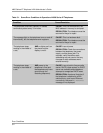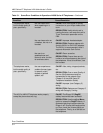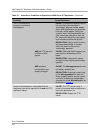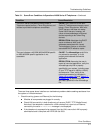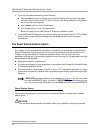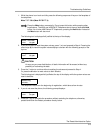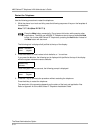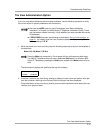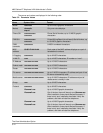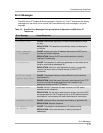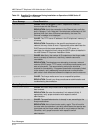
4600 Series IP Telephone LAN Administrator’s Guide
The Reset Administrative Option
5-8
2. If you are using static addressing, do the following:
■ Use the VIEW command to find the names of the files being used and verify that these
filenames match those on the TFTP server. Check on the Avaya website to verify whether
the correct files are being used.
■ Use the ADDR option to verify IP addresses.
■ Use the QOS option to verify QoS parameters.
Refer to Chapter 3 of the 4600 Series IP Telephone Installation Guide.
3. If the 4600 Series IP Telephone is not communicating with the system (DHCP, TFTP, or Media
Server), make a note of the last message that was displayed and consult the system
administrator.
The Reset Administrative Option 5
As indicated in some troubleshooting procedures, sometimes it is appropriate to reset the 4600
Series IP Telephone. Procedures on how to do so are printed below, and can also be found in
Chapter 3 of the 4600 Series IP Telephone Installation Guide. The following is the list of
parameters, settings, etc., that are reset to default values (including "null" as applicable) when the
Reset procedure is completed:
■ Registration extension and password.
■ All values administered by local procedures, in accordance with Chapter 3 of the 4600 Series
IP Telephone Installation Guide.
■ All values previously downloaded via DHCP or from a TFTP settings file (although, of course,
these values are generally restored when the telephone goes through registration again after
the reset.
Reset System Values 5
Use the following procedure to reset all system initialization values to the application software
default values.
CAUTION:
This procedure erases all static information, without any possibility of recovering the data.
If PROCSTAT was administered to 1, as described in Chapter 4, you will not be able
to invoke the R E S E T option. In addition, if PROCPSWD was administered as non-
null, you must enter that value after you press Mute and before you press R E S E T.





